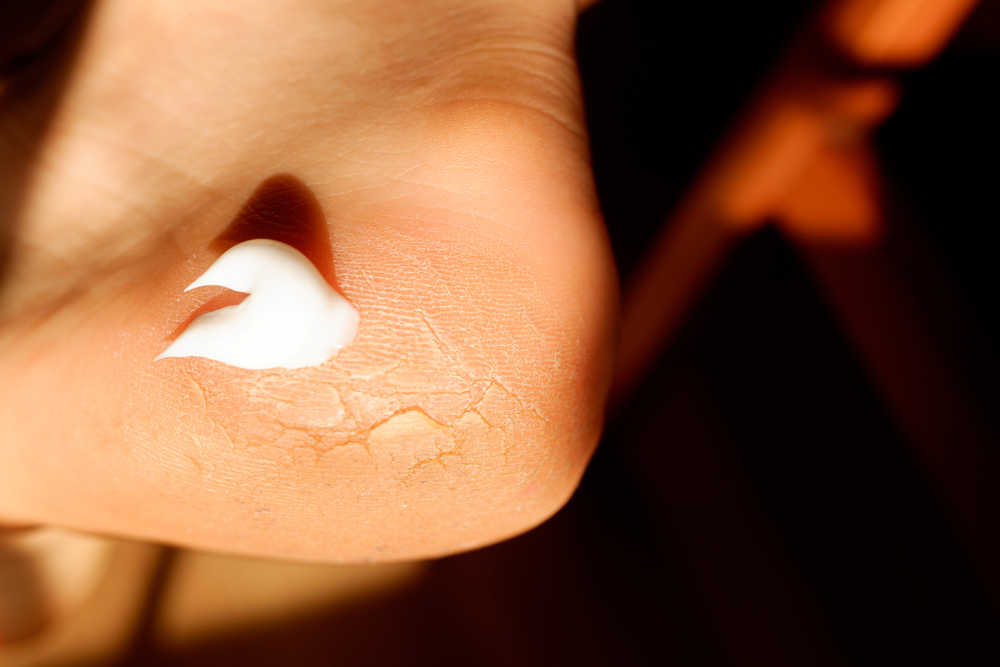Urea can moisturize dry skin. Here you will find out what urea exactly is, how it is obtained for skin care and how it really works.
Is your skin dry, flaky and itchy? Or do you just want to give your skin a kick of moisture? No matter what your skin is like – the active ingredient urea could now be just right for you.
What is urea?
Urea is the Latin word. It is a natural breakdown product of our metabolism: Strictly speaking, it is the end product of amino acid metabolism and is excreted from the body in urine and sweat. This is why urea also gets on the skin, where it binds moisture and ensures that it does not dry out. Ideally, our body produces so much urea that the skin is adequately protected.
How does urea affect the skin?
Creams and lotions with urea stabilize the skin’s moisture balance. In contrast to other components of personal care products, such as oils, urea penetrates the skin and can absorb and, above all, store moisture there. Urea is therefore a natural moisturizing factor (NMF).
But urea has another great advantage: It has a keratolytic effect, which means that it breaks down the connections between dead skin cells. In this way, urea promotes the natural flaking of the skin – the surface of dry skin is smoothed and made more supple.
Urea also has skin-soothing and antimicrobial properties – it can therefore fight microbes such as bacteria or fungi on the skin. Urea thus supports the natural protective function of our skin barrier.
Properties of urea at a glance
- intensively moisturizing
- strongly water-binding
- antibacterial
- antifungal (acts against diseases caused by fungi)
- absorbs quickly
- smoothes the skin
- dissolves dandruff
- reduces itching
- stabilizes the pH value
Which skin types is urea products suitable for?
Urea-containing care products are suitable for all skin types. Especially dry and mature skin benefits from the storage capacity of the active ingredient. The skin is well moisturized and the moisture can be retained for a long time. Urea can also benefit oily, impure skin and skin prone to acne. Since the urea has a water-binding effect and loosens keratinized areas of the skin, sebum flows off better. The condition of oily and blemished skin often improves enormously as a result. Since urea has a slightly antibacterial and antipruritic effect in higher concentrations, this can also lead to an improvement.
Does urea help against wrinkles?
Care products with a urea content of up to five percent hydrate the skin or prevent the skin from drying out – and thus also prevent the formation of wrinkles. As an anti-aging booster, urea is often combined with hyaluronic acid, peptides or ceramides. This combination of active ingredients can plump up the skin and wrinkles caused by dryness disappear in no time.
What percentage of urea should my cream contain?
Admittedly, the percentages on urea creams and lotions can sometimes be a bit confusing. Five percent, ten percent or even more? What is right? As a rule of thumb, the drier the skin, the higher the urea content should be.
If the moisture balance of normal to dry skin is to be supported, a urea content of five percent is completely sufficient. If the skin is very dry, the product should contain at least ten percent urea. Because then it loosens dead skin cells, relieves itching and makes the skin supple again. You can use urea products with 30 percent if you want to care for extremely calloused, dry areas such as feet, elbows or knees. Products with 40 percent urea have such a strong keratolytic effect that they can be used to remove diseased nails – for example in the case of nail fungus.
Before using care products with a very high urea content, it is advisable to consult a dermatologist.
Does urea make sense in hair care?
Urea is also an excellent active ingredient for the hair. And the great thing is that urea has a double effect on the head. On the one hand, it cares for the hair and on the other hand, it protects the scalp from drying out. Particularly in the case of scalp irritation, which is accompanied by itching and dandruff, hair care products with urea content can provide relief.
How does urea get into the products?
Surely you have asked yourself how urea actually gets into the care products, if it is a degradation product of our body. Of course, creams and lotions do not use natural urea, but artificially produced urea. It is created by allowing carbon dioxide and ammonia to react and combine under high temperature in the laboratory. After that, the artificial urea can be added to serums, lotions and creams.
Does urea have side effects?
Urea is considered very skin-friendly and has no side effects worth mentioning. However, users with sensitive skin should look carefully at the list of ingredients when buying a urea product. It is possible that an accompanying active ingredient in the product could trigger side effects or allergic reactions.
What should I look for when buying urea products?
- free of mineral oil, linolin and PEG
- preferably without sodium laureth sulfate
- for sensitive skin without perfume and dyes
- Pay attention to the dosage: the higher the urea content, the more intense the effect (see above)

